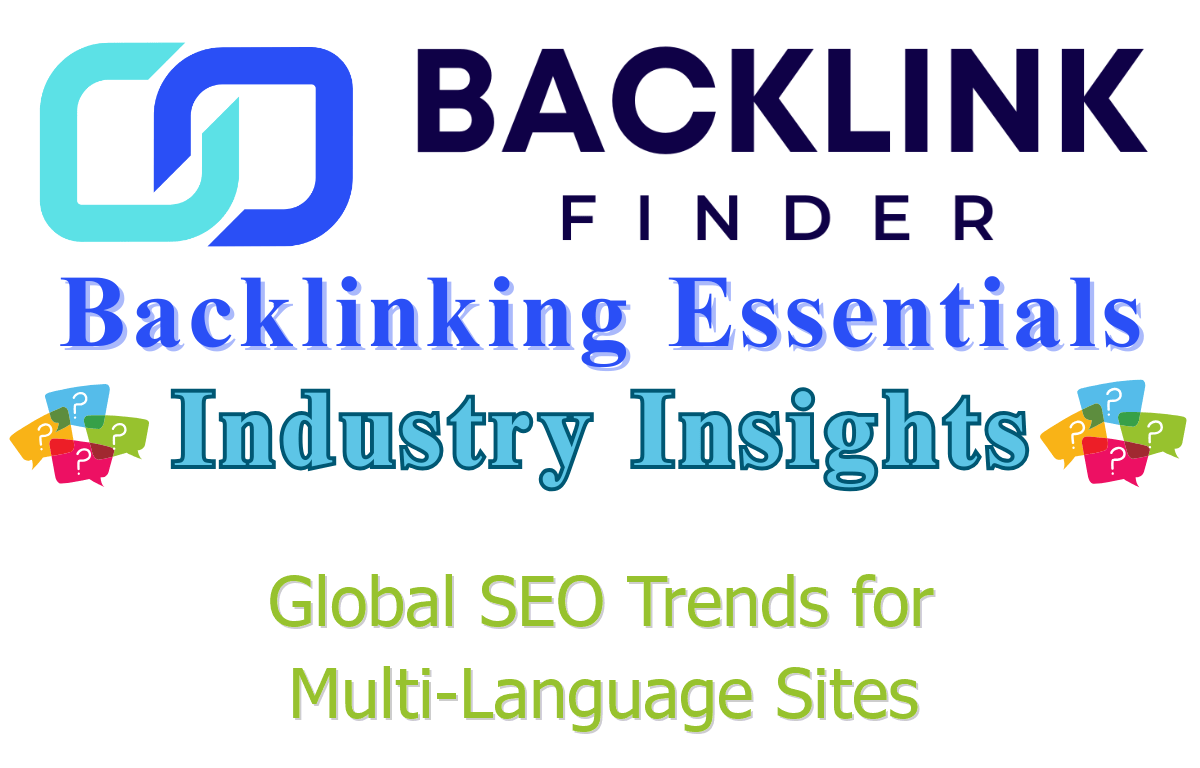Global SEO Trends for Multi-Language Sites

Picture your blog as a world traveler, charming readers in Paris, Tokyo, and São Paulo. Multi-language sites let you speak everyone’s language, but global SEO—especially backlinks—makes sure Google sends the right crowd your way. In 2025, new trends are shaping how these sites rank worldwide. New to SEO? No passport needed! Let’s explore global SEO trends for multi-language sites with a few examples, simple tips, and a pinch of fun. Ready to go global? Let’s pack our bags!
What Are Multi-Language Sites?
Multi-language sites offer content in different languages—like English, Spanish, or Mandarin—to reach diverse audiences. Backlinks, links from other sites to yours, boost trust for searches like “meilleures recettes” (best recipes) in French or “viajes baratos” (cheap travel) in Spanish. Global SEO ensures your site shines in every tongue.
- Example: A French blog links to your “Baguette Baking Tips” in French, ranking it for “recettes de pain” (bread recipes).
- Stat: Multi-language sites saw 25% more global traffic with localized SEO in 2024, per industry trends.
Why Global SEO Matters for Bloggers
SEO’s your blog’s megaphone, amplifying reach across borders. For multi-language sites, it’s about connecting with readers in their native language while earning Google’s trust. In 2025, global SEO trends—like localized backlinks—are key to making your blog a worldwide hit, no matter the language.
- Example: A Spanish travel site links to your “Barcelona Guides” in Spanish, boosting “lugares para visitar” (places to visit).
Top Global SEO Trends for Backlinks
Multi-language sites are riding new waves in 2025. Here’s how backlinks fit into global SEO trends:
- Localized Backlinks Surge: Links from region-specific sites—like a German blog for your Deutsch content—signal relevance to Google’s local algorithms.
- Hreflang Boosts Links: Using hreflang tags (which tell Google your page’s language) makes backlinks from matching-language sites more powerful.
- Cultural Relevance Wins: Backlinks from blogs reflecting local culture—like a Japanese site for your Nihongo posts—drive engagement Google rewards.
Analogy alert: Your multi-language site’s like a global buffet. Backlinks are the local chefs recommending your dishes, ensuring every plate (page) hits the right taste buds.
Quality Backlinks: The Global Gold Standard
In 2025, quality backlinks—relevant, trusted, and language-specific—are non-negotiable for multi-language sites.
- Target Local Sites: Links from regional blogs (check Domain Authority with Moz’s free tool—30+ for impact) align with local searches.
- Match Language: A Portuguese link to your Portuguese “Fitness Tips” page beats an English one for “exercícios em casa” (home workouts).
- Avoid Spam: Skip generic or mismatched-language links—they’re like serving sushi at a taco stand, confusing Google.
Want to conquer global SEO? Backlink Finder, with its 400,000+ marketplace listings, connects you to guest post opportunities and keyword-optimized backlinks tailored to any language, perfect for 2025’s worldwide stage.
Busting a Myth
Some bloggers think one-language backlinks work for all site versions—like using English links for a Spanish page. Nope! In 2025, Google’s sharper at spotting language mismatches. Localized, language-specific backlinks are the ticket to global rankings.
Multi-language SEO thrives on local backlinks—match the language, win the ranking. Global’s the game in 2025! #SEO #GlobalSEO— Kate Toon (@katetoon) June 20, 2025
Kate’s tweet nails it—local links are global SEO’s secret sauce. Time to speak Google’s language!
Beginner Steps to Boost Multi-Language Backlinks
Ready to make your multi-language site a world star? Here’s how to start:
- Create Localized Content: Write a post like “Top Tokyo Cafés” in Japanese to attract Nihongo blog links.
- Pitch Regional Blogs: Email a guest post idea, like “Recetas Mexicanas” to a Spanish food site, linking your Español page.
- Use Hreflang Tags: Add hreflang to your pages (free tools like Aleyda Solis’ generator help) to make backlinks count.
Aim for one language-specific backlink a month—small steps conquer the globe!
Mistakes to Avoid
Don’t let global SEO trip your blog’s world tour. Skip these blunders:
- Mixing Languages: English links for your German page dilute relevance—match the language every time.
- Skipping Hreflang: Without hreflang, Google might misread your backlinks, hurting multi-language rankings.
- Ignoring Audits: Check backlinks with Google Search Console. Spot a mismatched one? Disavow it to stay global-ready.
Further Reading
Want to keep your multi-language SEO worldly? Check out these beginner-friendly resources:
- Moz’s International SEO Guide – A simple intro to global rankings.
- Ahrefs’ Global SEO Tips – Strategies for multi-language links.
- Search Engine Land: Multi-Language SEO – Trends for global sites.

